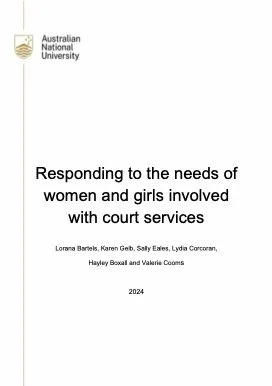By Lorana Bartels, Karen Gelb, Sally Eales, et al.
Pathways to offending among women and girls are significantly characterised by histories of domestic and family violence, trauma, homelessness, illicit drug use, unemployment and/or mental illness. While the ‘school-to-prison pipeline’ is often used as a short-hand description of boys’ pathways to incarceration, a ‘sexual abuse-to-prison pipeline’ is a more apt description of the trajectories for girls and young women. The foregoing issues are compounded for Aboriginal and Torres Strait Islander people.
This literature review outlines current evidence-based research that identifies the needs and experiences of women and girls involved with courts and applies gender and cultural lenses to examine the efficacy of court-based interventions. It includes a series of case studies. Issues covered include:
Canberra: Australian National University,
THE CENTRE FOR SOCIAL POLICY RESEARCH, 2025. 214p.





















